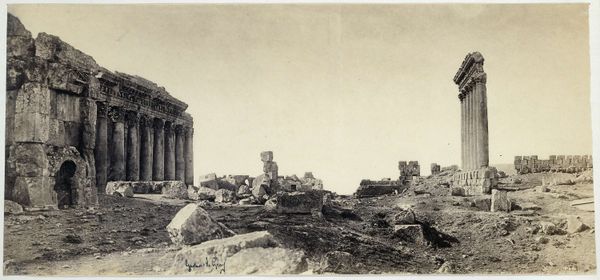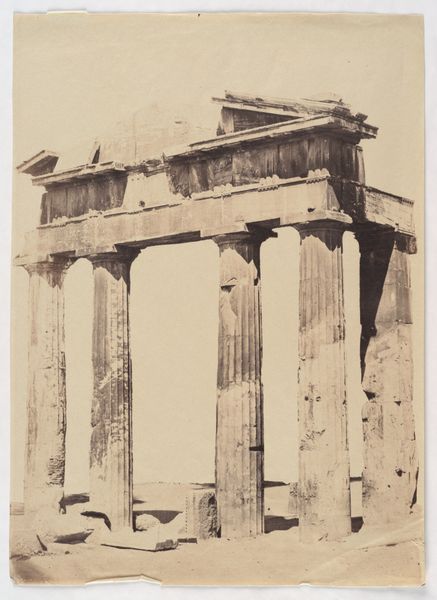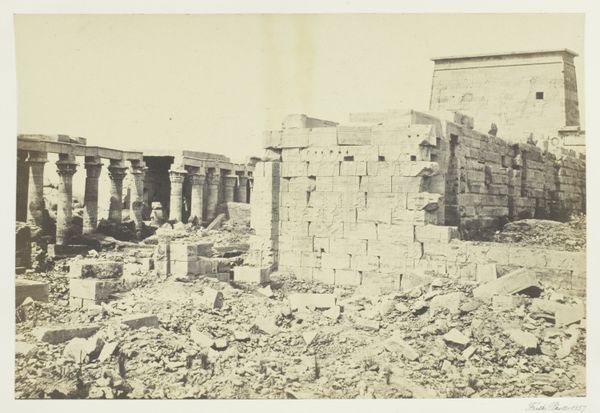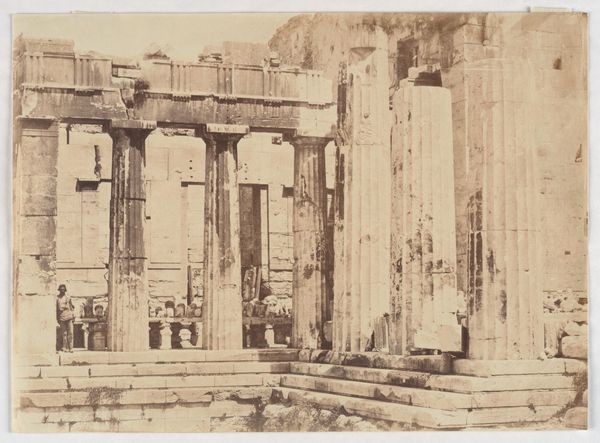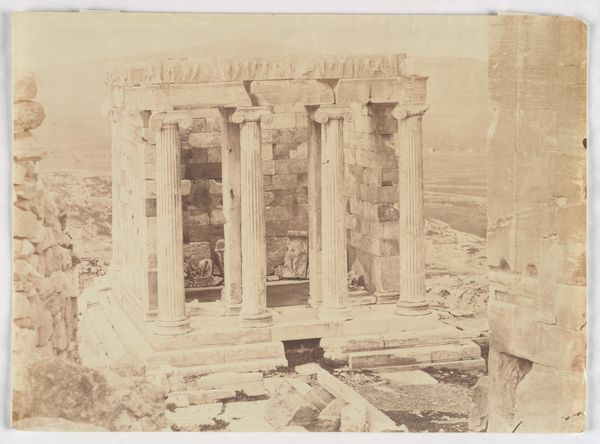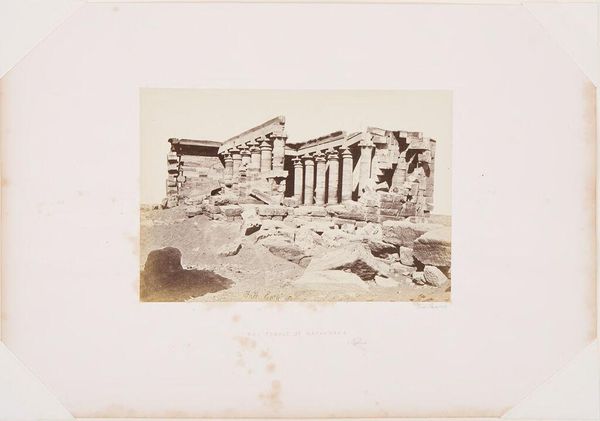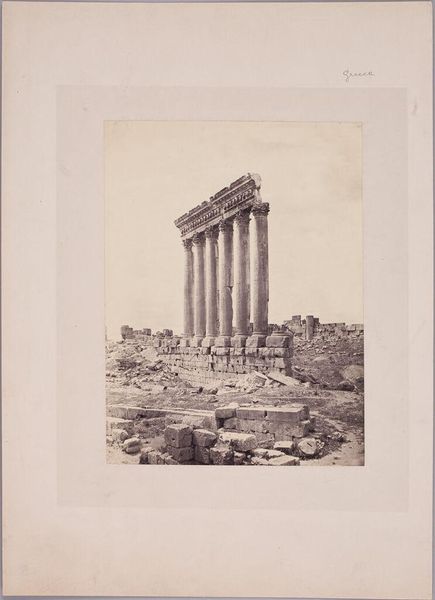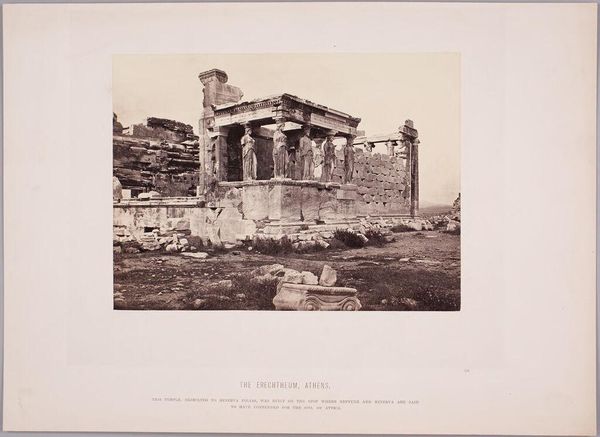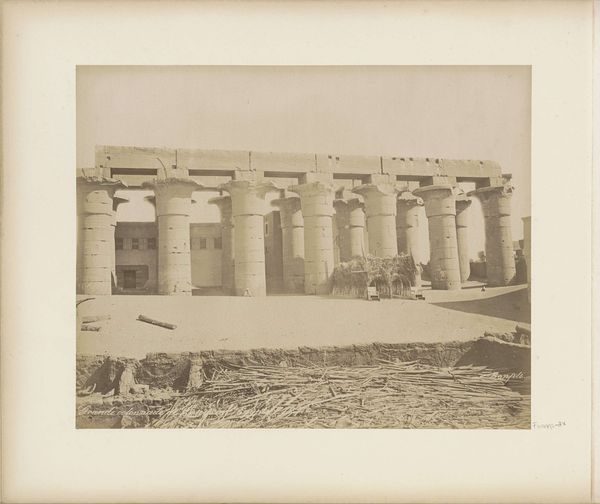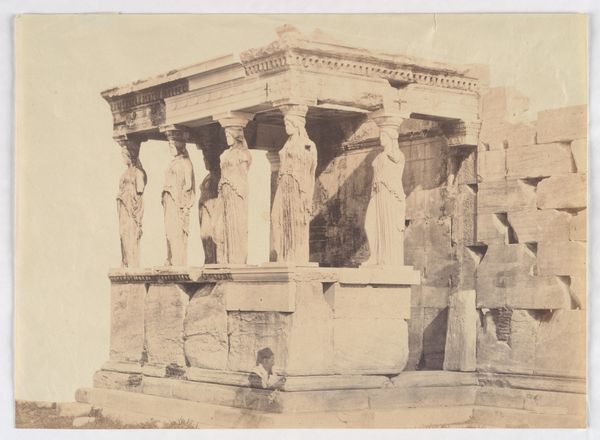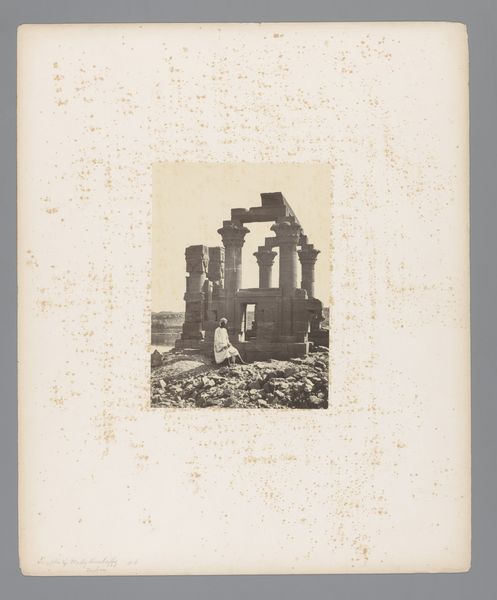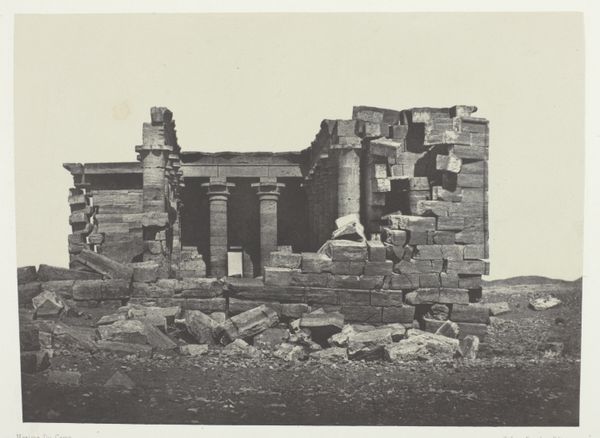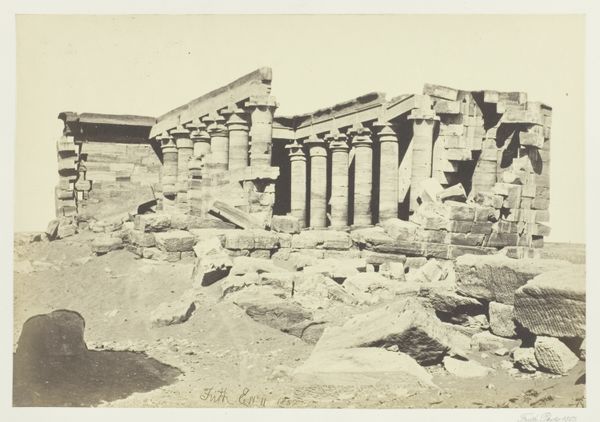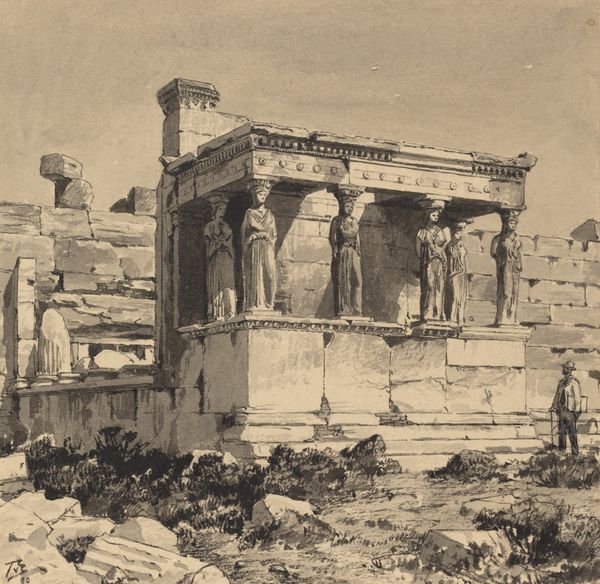
#
aged paper
#
toned paper
#
pasteup
#
water colours
#
muted colour palette
#
coloured pencil
#
watercolour bleed
#
watercolour illustration
#
mixed media
#
watercolor
Dimensions: height 225 mm, width 290 mm, height 390 mm, width 560 mm
Copyright: Rijks Museum: Open Domain
Editor: Here we have Félix Bonfils' "Gezicht op het Erechtheion in Athene," created before 1872. The sepia tones lend a timeless quality to this depiction of the ancient structure. I’m intrigued by how the image itself is presented, almost like an artifact. How do you approach this piece? Curator: I see this work as a layered document reflecting Victorian-era engagements with classical antiquity and the emergence of photography as a mode of production. Look closely at the mounting; the aged paper, the watercolor bleed, and the annotation at the bottom edge. The physical manipulation of the print – its constructed nature – challenges the idea of the photograph as a pure, transparent window onto the world. Editor: So you’re focusing on the image as a manufactured object. Curator: Exactly. Think about the labour involved in producing multiple copies of this image. Bonfils was running a commercial studio. His workers, potentially local residents, prepared these photographs in their darkroom. What labor practices were in play to produce this artifact and feed a global marketplace eager to consume images of antiquity? And consider the consumption of these images. How did photographs like these shape colonial views of Greece and the East? Editor: That’s a compelling point – it shifts my focus from simply admiring the ruins to thinking about the economic and cultural systems that made this image possible. It’s like uncovering the hidden supply chain of art. Curator: Precisely. By emphasizing process and consumption, we see how intertwined art is with larger societal structures and how images become commodities embedded in a specific cultural and historical moment. What initially appeared to be an aesthetic landscape suddenly reveals layers of manufacturing processes. Editor: I never would have thought about it that way. Seeing this piece now, with all its material and production history, enriches the experience far beyond its pure aesthetics.
Comments
No comments
Be the first to comment and join the conversation on the ultimate creative platform.
